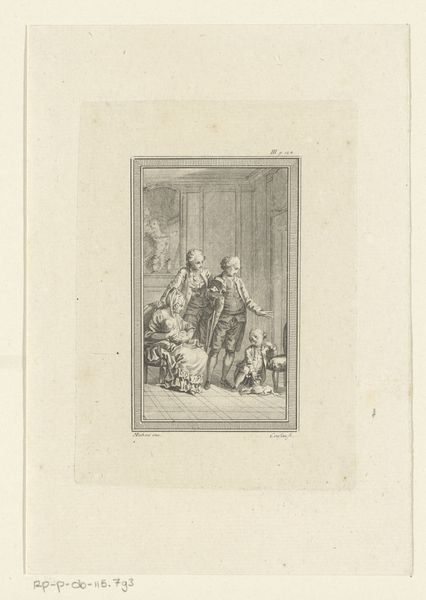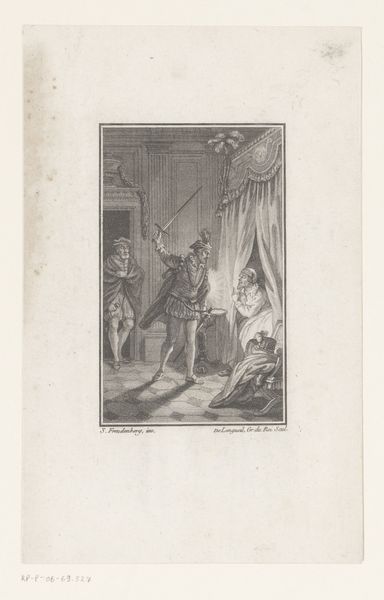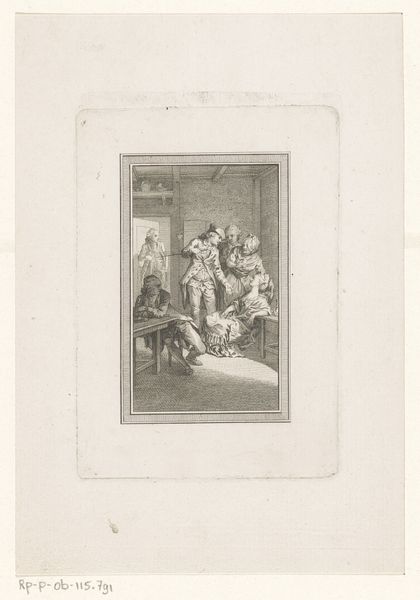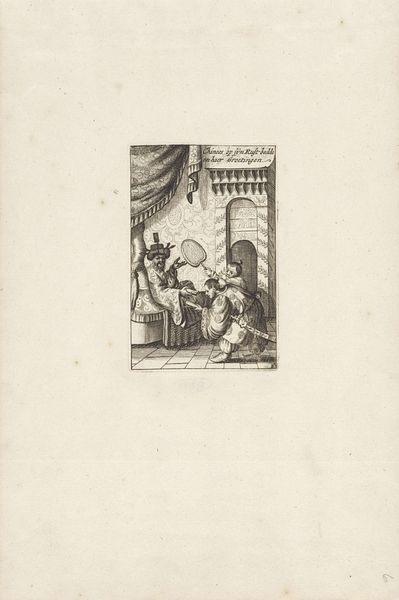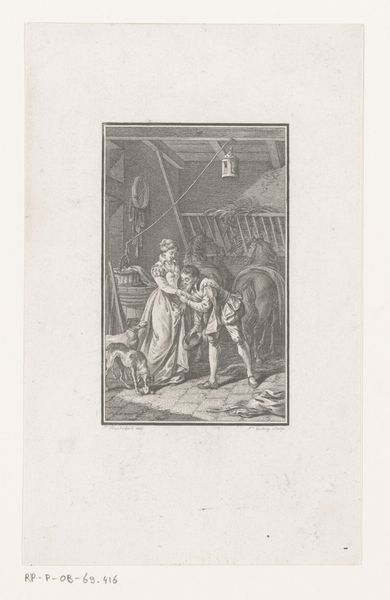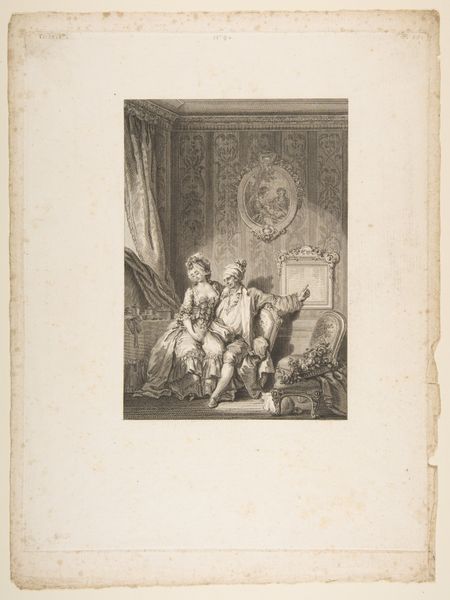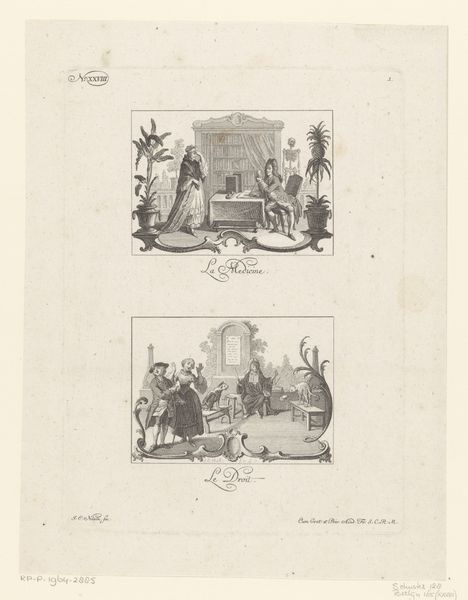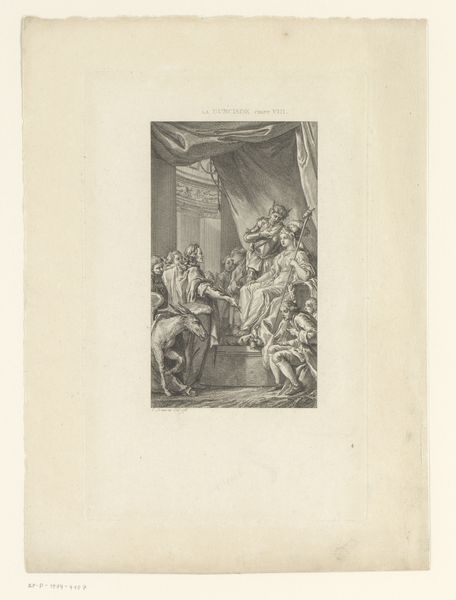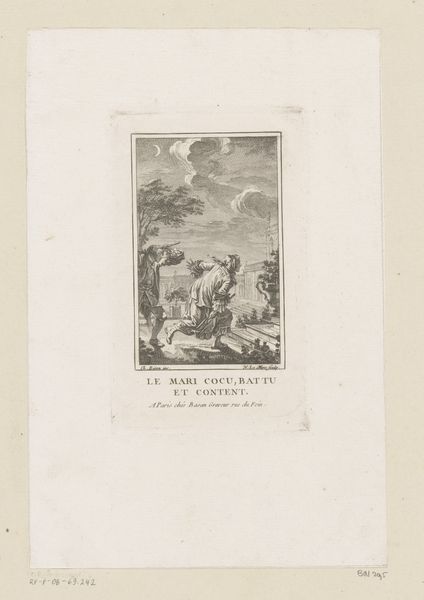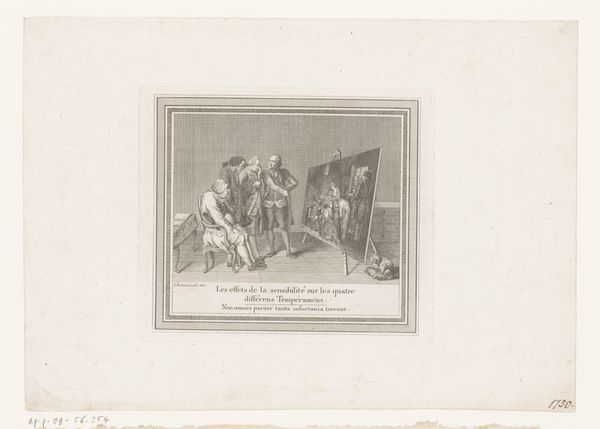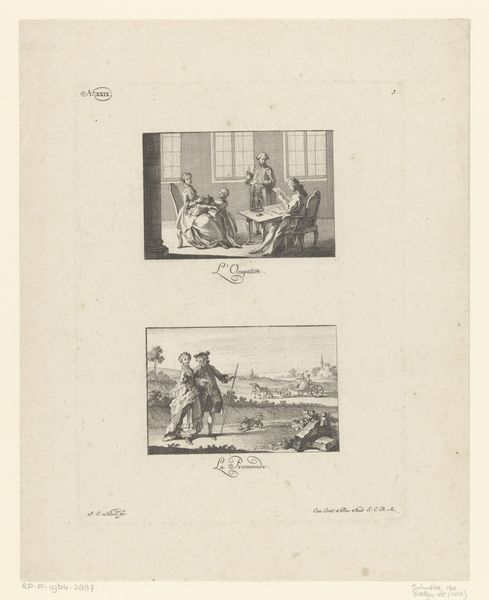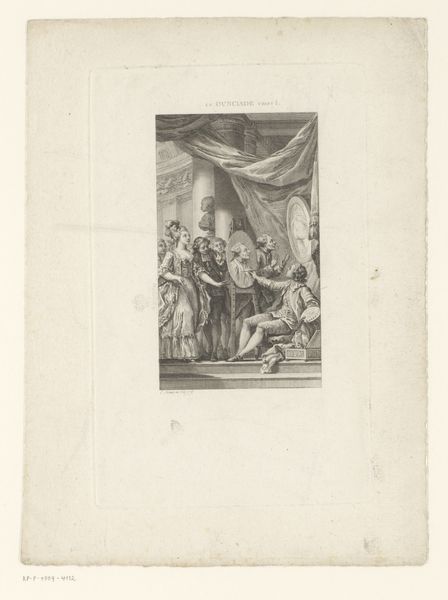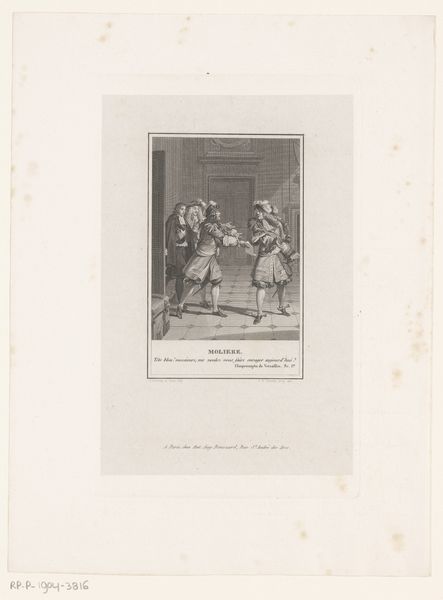
print, engraving
#
portrait
#
ink paper printed
# print
#
old engraving style
#
figuration
#
line
#
genre-painting
#
history-painting
#
engraving
#
rococo
Dimensions: height 134 mm, width 82 mm
Copyright: Rijks Museum: Open Domain
Curator: Let's examine "Biechtende vrouw," or "Confessing Woman," an engraving created in 1762 by Noël Le Mire, currently held in the Rijksmuseum's collection. It’s printed on ink paper, and exemplifies a style leaning towards rococo. Editor: The stark lines of the engraving immediately lend a tense, secretive atmosphere. You're drawn to the dynamic of the figures, cloaked and caught in this act of confession. Curator: It’s fascinating how Le Mire utilizes line engraving to delineate not only the figures but also to render texture and shadow, effectively evoking a genre scene within a historical context. We have a confessional, but observe its embellishment. Does this undermine the purpose? Editor: Right. It’s interesting that even religious confession can’t escape the grasp of societal display. How much is truly penitential and how much performs piety, under the watchful eyes or ears of society, with Le Mire holding the means to distribute his etching? Curator: Absolutely, consider how the printing press transforms private acts into commodities, feeding into 18th-century society's fascination with spectacle and moral reflection, challenging traditional ideas on the divide between what's viewed as popular and what's traditionally defined as "high art." Editor: Precisely, with its clear engagement with morality, this work shows us how prints could address serious issues with satirical undertones. It underscores the politics inherent to image creation during this era. Was the Rococo style the best vessel to expose the corruption and/or virtue among the figures? Curator: I believe Le Mire challenges such simplistic distinctions; he's working to make such questions complicated and worthy of a place on a museum wall. Editor: Very true, examining Le Mire’s print today challenges our understandings of 18th-century moral attitudes.
Comments
No comments
Be the first to comment and join the conversation on the ultimate creative platform.
